Lord of the Rings
It feels like this is a place taken straight out of a storybook. Surrounded by hilly forests, little gabled houses are lined up next to each other, large wooden figures standing in front of them. Nutcrackers, angels and “Räuchermännchen” (loosely translates as smoking mannequins) lure curious visitors into the workshops and shops. The spa town of Seiffen, which is also known as the “toy village”, is the epicentre of folk art in the Ore Mountains.
A steep staircase leads from the high street to the Werner wheelwright manufactory. Christian Werner welcomes you to the little shop. Hundreds of wooden animals adorn the shelves, including domestic ones like deer, cows, horses and wild boars, and exotic species such as elephants and giraffes. Standing next to his creations, Werner looks like a friendly giant. He wears what he’s worn at work for decades: light-coloured corduroy carpenter’s trousers with a matching waistcoat and a white collarless shirt, plus a colourful jelly bag hat. The 64-year-old isn’t a big fan of small talk. Without further ado, he talks about his father, who was a respected artisan, a “Männelmacher” as such people are called here, about his two brothers who, like him, learned the art of making wooden toys. He says that he already decided when he was a child that he was going to be a wheelwright. You can tell that he’s told his story many times before and that he knows full well that it’s a special one.
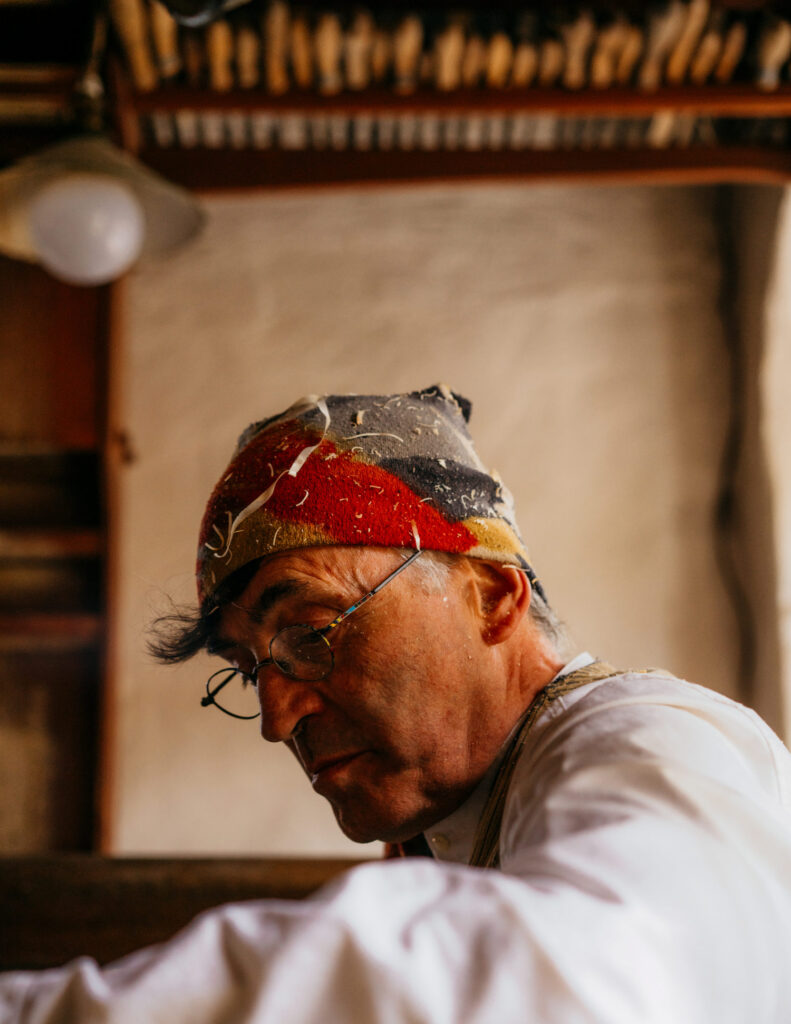
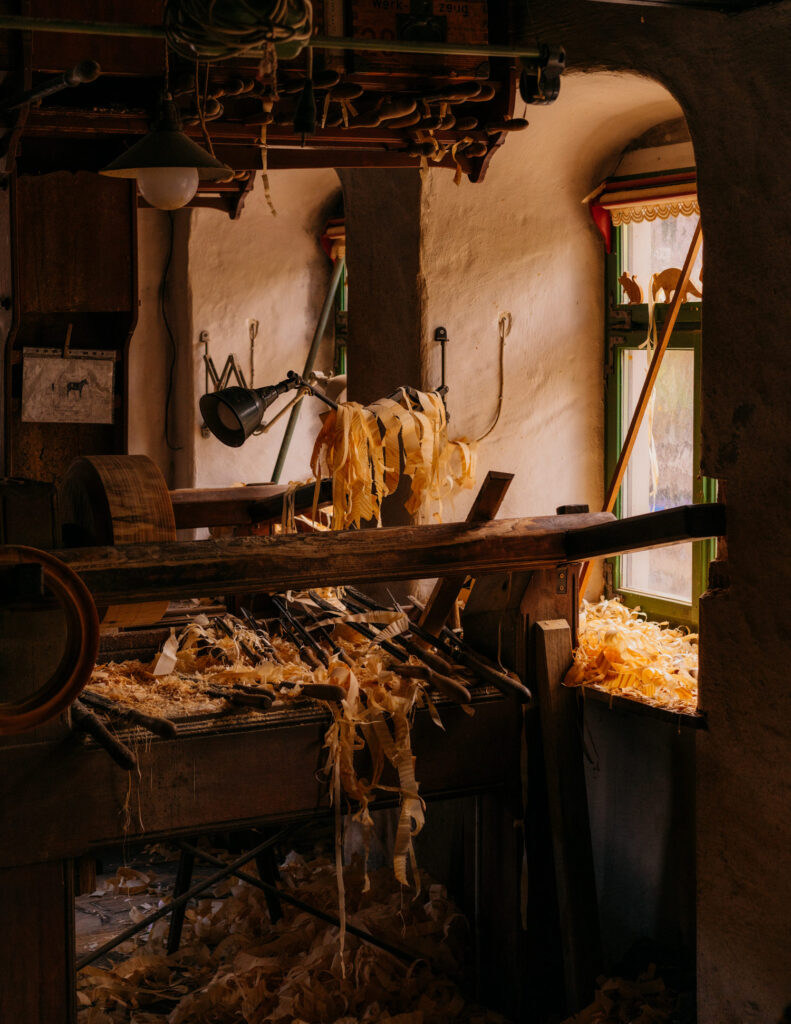
Then the master leads the way into the workshop. Every inch of space is covered with long shavings of different widths that look like wooden streamers. A resinous, fresh smell of the forest hangs in the air. The sun shines through the windows and bathes the lathe in a golden hue. A circular piece of wood made from the trunk of a spruce about 40 centimetres thick is stretched in the holder. With an almost loving gesture, Werner places his hand on it, which is sinewy and covered with small scars. In the middle of the wheel, the growth rings are wide apart because the young tree has grown quickly. On the outside, the rings are narrower. Here the wood is fine-grained and dense, just as Werner needs it to be. In order for it to be like this, the tree has to grow under difficult conditions, Werner explains to us – high up, where it gets no sun and fights for survival. You don’t find trees like this in the Ore Mountains any more; climate change has made them grow far too quickly here.
That’s why Werner goes to the Kitzbühel Alps each winter, climbs up the northern slopes and looks for trees that meet his needs. There are quite a few of them up there. The moon influences the way the water moves; when it’s full, the trees are “full of moisture”, as Werner says, which doesn’t help further processing. That’s why his trees are felled at new moon, after which they are left until spring, so they use up the last of their nutrients. This makes it less likely that the logs will start to rot in the cellar in Seiffen. Werner processes 25 solid cubic metres per year. He strokes the wood and says: “Wood and humans are the same. If they’re always doing well, curious traits come to the fore.”
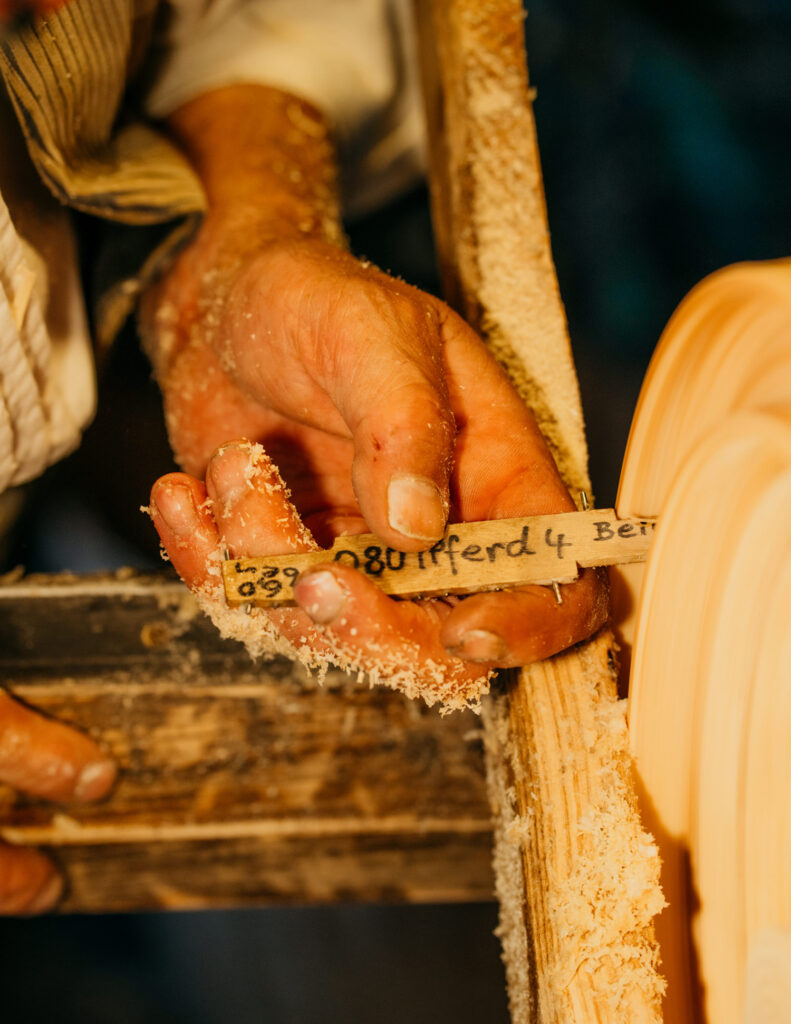
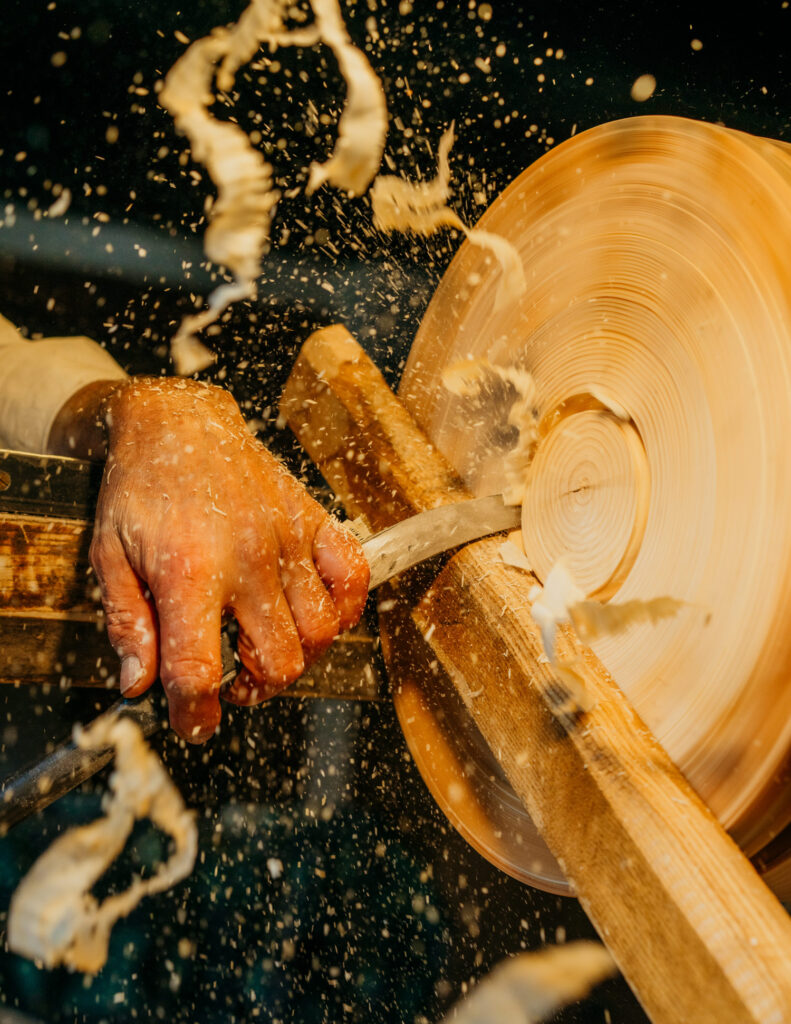
Thriving under adverse conditions, which requires a certain defiant stubbornness, is something Werner has in common with his trees. Since his youth, he’s been involved in the Protestant community, which had a reputation for not toeing the line in GDR times. Later on, he refused to do military service, whereupon the young skilled worker was assigned the most monotonous tasks. He had to process chip boxes all day long and felt like he was in prison. Things started to look up when he got a job at the newly opened open-air museum, where an old wheelwright also showcased his craft. When the old man agreed to train him, his childhood dream finally came true. After a few years as a tourist attraction, Werner set up his own wheelwright business in 1985.
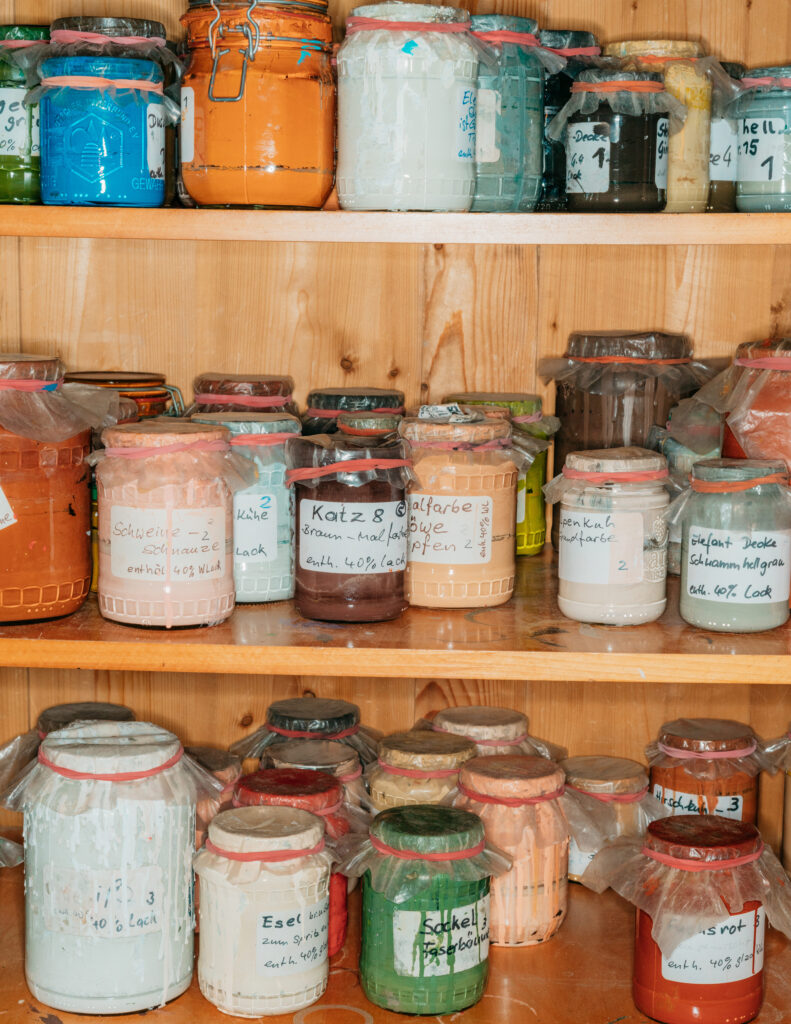
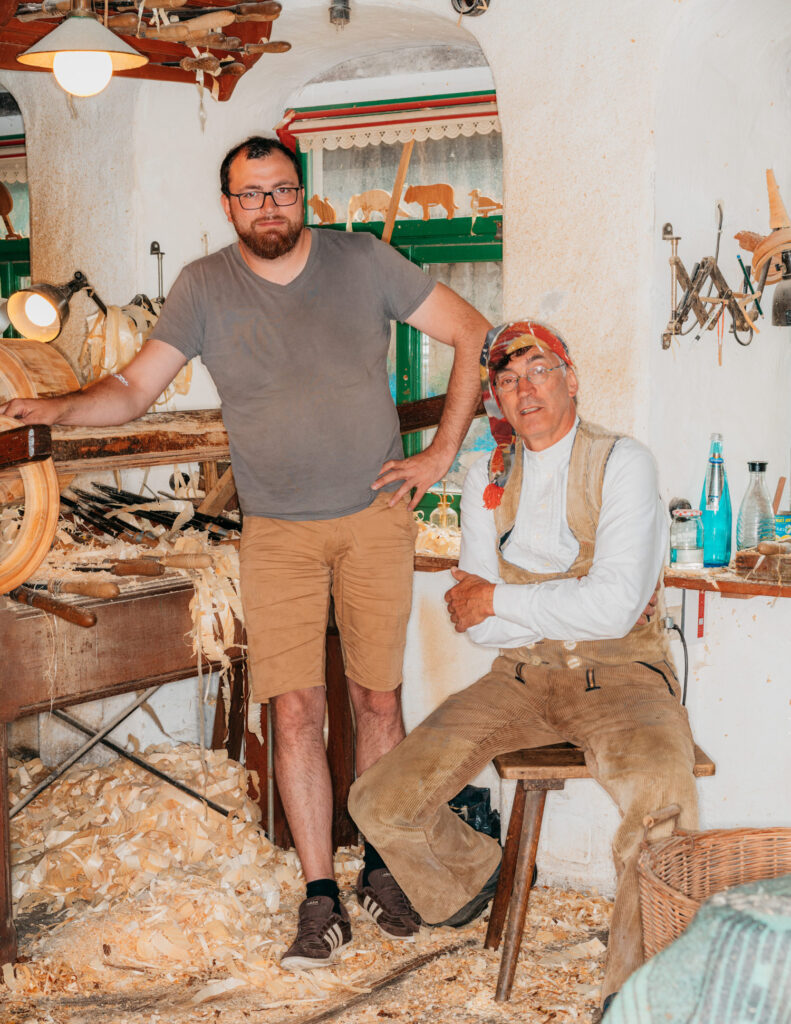
Four years later, he and his wife and two children welcomed reunification with open arms, but then faced great difficulties once again. Whereas the cooperative used to buy his products at a fixed price, he now had to handle customers and marketing himself. He toured Germany, visiting markets and travelling to craft demonstrations. But people found his craftsmanship impressive. He was twice featured on “Die Sendung mit der Maus”, the Chicago Tribune reports, and a Japanese museum invited him to open an exhibition on woodcrafts. “In Japan, craftsmanship is much more appreciated than here,” says Werner. There, he was awarded “living monument” status by the national heritage authority, which pays tribute to people who pass on special skills to the next generation.
On the workbench, the piece of wood is now set in a fast rotating motion. Werner cuts grooves into the surface with different knives. “You can see the bottom now, and here are the legs,” he says. To non-experts, it looks more like a kind of wooden bowl. “A wheelwright,” says Werner, “must master the art of seeing the positive through the negative.” He smiles, before adding, “which, by the way, is generally helpful in life”.
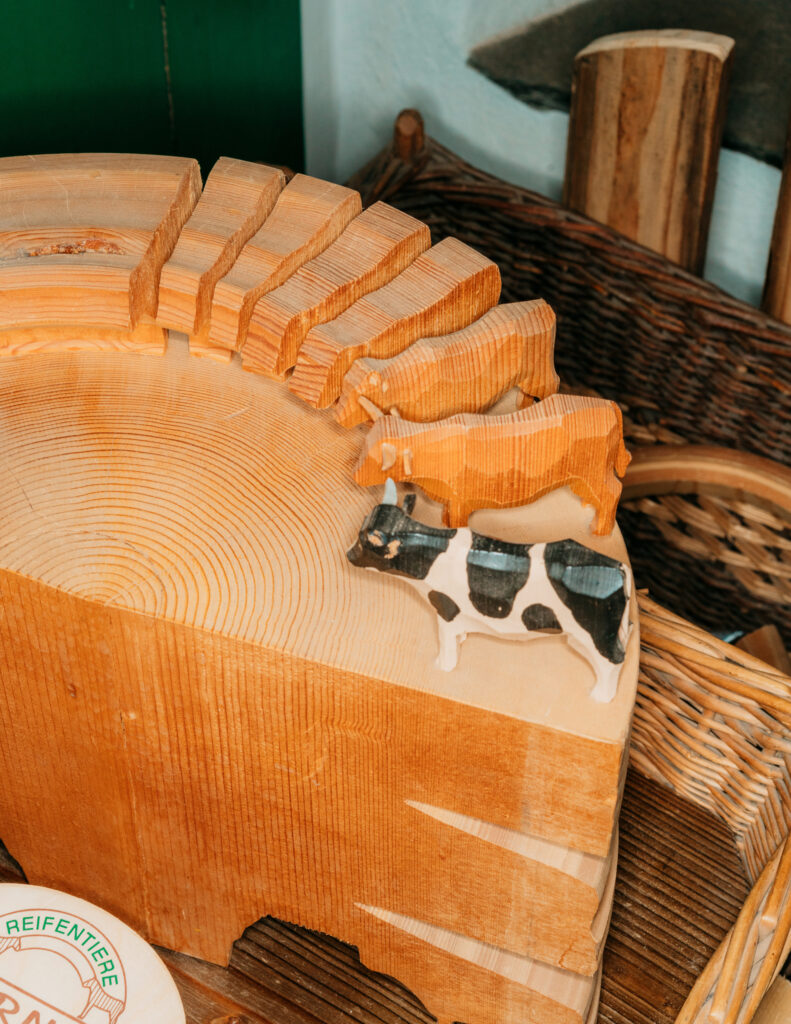


After a time, he separates the completed outer ring from the block and removes it. With a kitchen knife and hammer, he splits the ring into segments, and now the shape becomes visible even to the untrained eye – a horse emerges. Sixty horses, to be precise – that’s how many you can cut out of a ring. The horses are then carved and painted. The technique, which seems old-fashioned today, marked a sensational rationalisation of production in the 1800s. All of a sudden, it was possible to quickly produce many identical parts – accessories for the hand-carved figures, for example. “The sky over Seiffen was like the roof of a large manufactory,” says Werner. Other manufacturing areas were left behind. “People in the Glottertal give us the cold shoulder to this day,” Werner says and laughs.
You have to be hardworking and perhaps “not quite all there”, he says, scratching his head. He sells his animals all over the world and is able to make a living from this. “We’re still able to keep up in these highly technical times, which shows what an ingenious craft this is.” His son Andreas is seeing to it that this tradition endures. He’s decided to learn this craft from his father and take over the business. “The craft is unique. Of course it’s a niche, but we can keep our heads above water in this niche.” Of that he’s certain.
This article was first published in the Fall 2022 print edition of 30 GRAD.